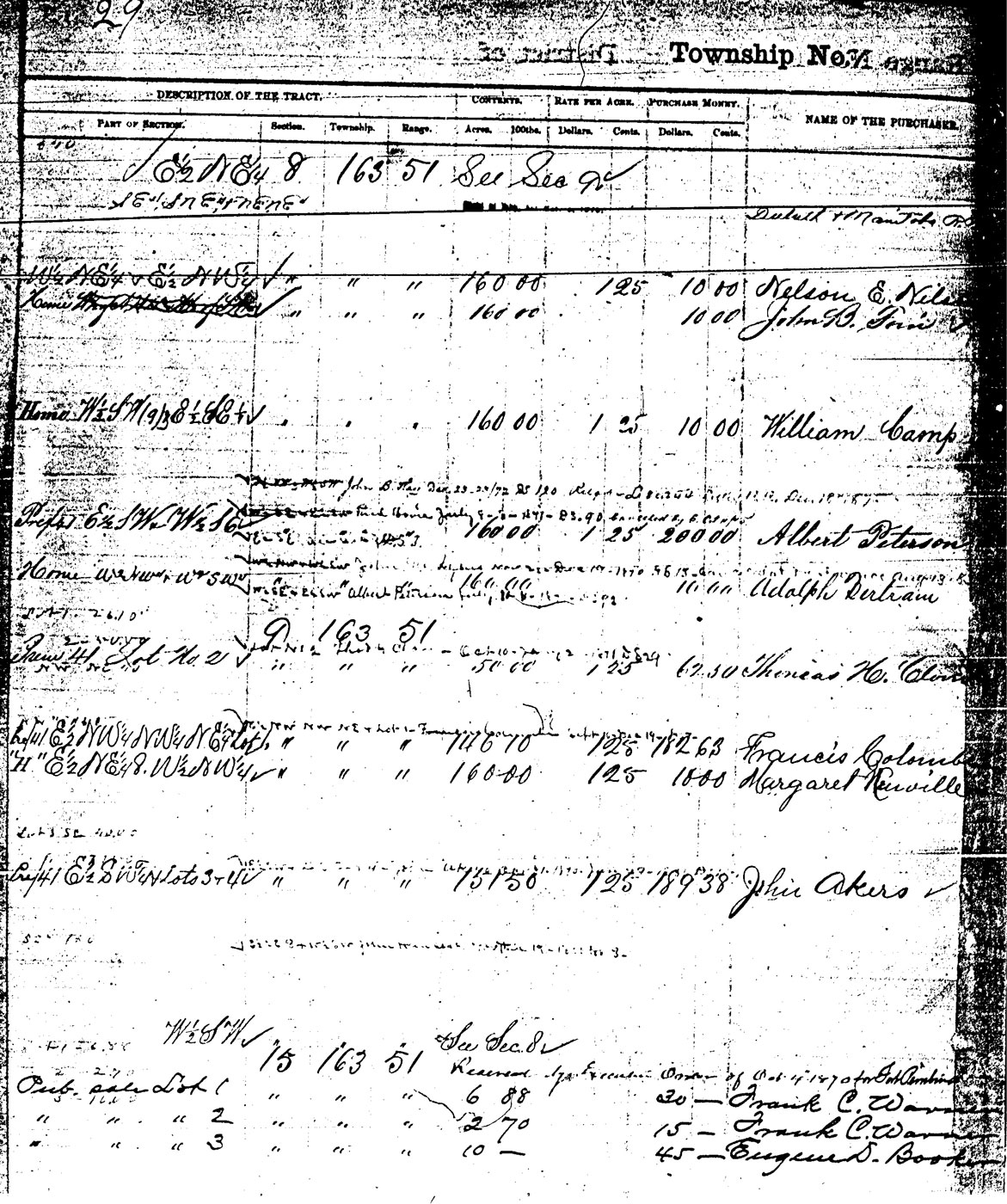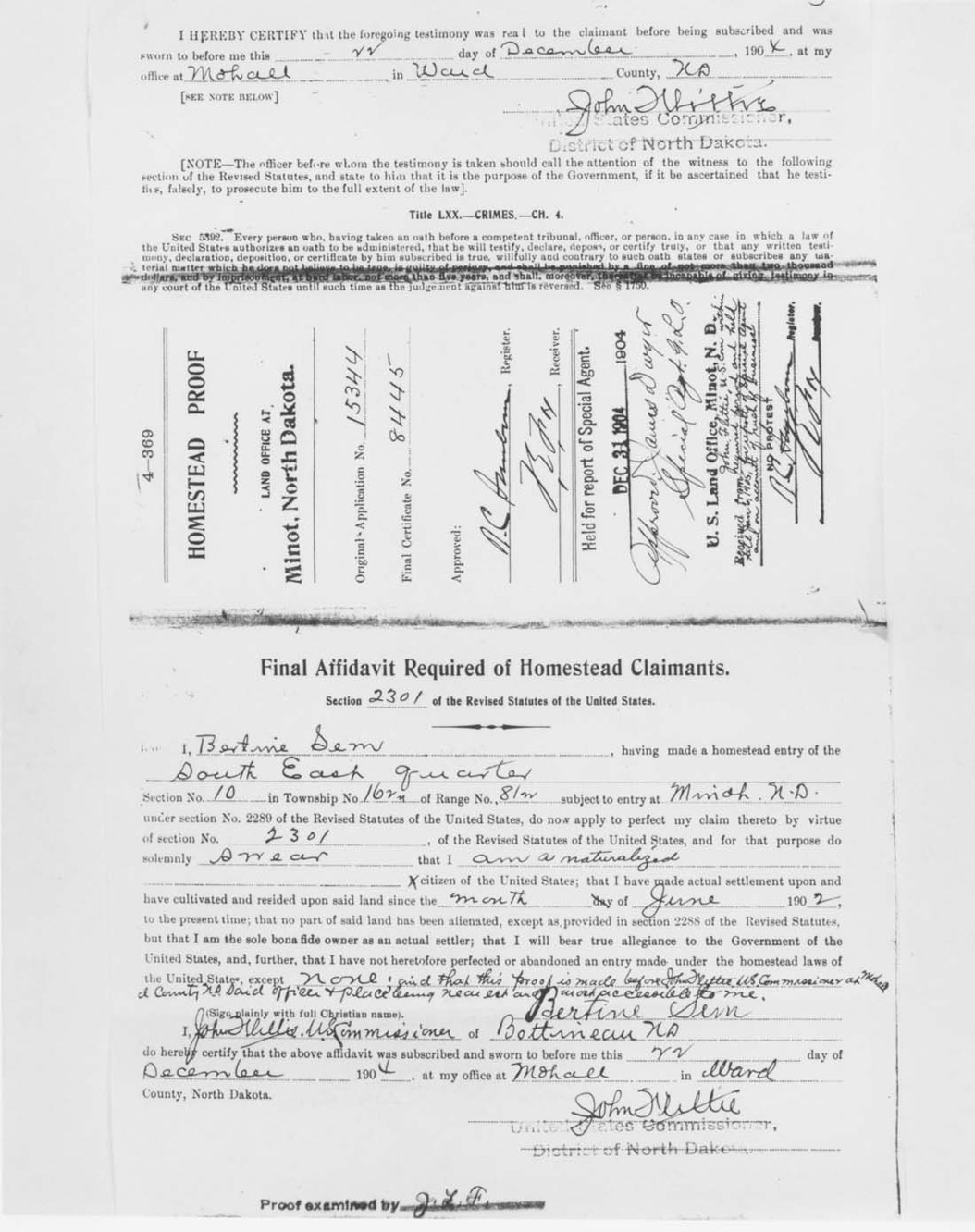When the Revolutionary War ended in 1783, the United States was rich in undeveloped land which was called the Public Domain.The land owned by the federal government was undeveloped, which meant to Americans in those days that it had no towns, houses, farms, or businesses. Some people thought of the land as “empty.” However, there were Native American families living on the land in towns and villages. Whenever the United States sold or gave away land, Indian communities and families who lived there had to go somewhere else. Most of these communities, or tribes, went west; some went south. They lost their traditional homelands, their ancestors burial grounds, their spiritual centers, the places where they found plants and animals. They had to learn entirely new ways of living and meet new people who would become either their friends or their enemies. After 1860, the government decided to place Indian tribes on reservations. However, the nation’s treasury was poor. The U. S. needed to raise some money to pay debts from the war. Congress decided to sell some land to raise money to pay off its war debts.
In 1785, Congress passed a law called the Land Ordinance. It was based on a plan by Thomas Jefferson to measure, divide, and distribute (or sell) land in the public domain. This law was improved in 1787 by the Northwest Ordinance which explained how the land west of the Appalachian Mountains (the land in the Northwest Territories) would be organized into territories and then become states. The law declared that slavery would not be allowed in the new states.
Both laws required that the land be surveyed (measured) and divided into townships that are six miles square. Each township is divided into 36 sections; each section is a mile square, or 640 acres. Congress put this land up for sale at a price of $1 per acre, but the buyer had to purchase at least 640 acres. Few people had that much cash in 1800, so Congress reduced the minimum purchase to 320 acres. However, the price of land rose to $1.25 per acre.
Some wealthy people took advantage of these laws to buy huge tracts of land in Ohio, but ordinary farmers protested that the law made the land too expensive. Americans believed that small, family farms were the ideal economic foundation for America. President Thomas Jefferson said that farmers who owned their land were “the chosen people of God.” Small farms with hard-working, independent people would make America strong. Many of these small farmers went west looking for less expensive land. Some went so far the surveyors had not yet measured the land and marked it for sale.
In 1842, Congress finally passed a law that helped small farmers. This law, called the Pre-emption Act, allowed anyone who lived on land, built a house, and plowed fields for crops (or made improvements) to purchase the land before it was surveyed. This law guaranteed that they would not lose their land and improvements to another purchaser. The minimum size was now 160 acres.
Most farmers were pretty happy with this law. Still, many people said the U. S. had so much land that it ought to be given away. The size of the public domain continued to grow with the Louisiana Purchase in 1803 (524,800,000 acres) and the Mexican Cession in 1848 (334,479,360 acres). More people asked Congress to pass a Homestead Law that would allow people to acquire land without paying for it.
There were two major political forces that prevented Congress from passing such a bill. Northern businessmen were afraid that free land would draw workers away from factory work. Some Congressmen thought that providing land to turn factory workers into farmers was a good idea. They believed the United States should always be a nation of farmers, not factory workers. They called free land the Safety Valve that would allow factory workers to leave the cities and become farmers.
Southern states also opposed the law. They did not want people to move west, create new states, and prevent the spread of slavery. Southerners were correct when they said that most small farmers opposed slavery and did not want to compete with large plantation agriculture.
These were the debates that prevented members of Congress from agreeing on a Homestead Law for two decades. Southerners feared a political attack on slavery; northern industrialists feared losing workers. Farmers, however, still wanted access to the public domain.
In 1860, when Abraham Lincoln was elected president, southern states seceded from the United States (also called the Union). With some of the opposition gone, Congress passed the Homestead Act on May 20, 1862 (See Document 1). It allowed the head of a household (a man or woman) over the age of 21 to claim 160 acres of land and receive title to the land after living on the land for 5 years and improving the land by cultivating it and building a home (See Image 1).

Document 1: Homestead Law
Document 1. A clerk in Congress wrote the original Homestead Act on paper. It was later printed. The yellow highlighted areas on the transcription draw your attention to some of the important details of the law.
CHAP. LXXV. —An Act to secure Homesteads to actual Settlers on the Public Domain.
Be it enacted by the Senate and House of Representatives of the United States of America in Congress assembled, That any person who is the head of a family, or who has arrived at the age of twenty-one years, and is a citizen of the United States, or who shall have filed his declaration of intention to become such, as required by the naturalization laws of the United States, and who has never borne arms against the United States Government or given aid and comfort to its enemies, shall, from and after the first January, eighteen hundred and. sixty-three, be entitled to enter one quarter section or a less quantity of unappropriated public lands, upon which said person may have filed a preemption claim, or which may, at the time the application is made, be subject to preemption at one dollar and twenty-five cents, or less, per acre; or eighty acres or less of such unappropriated lands, at two dollars and fifty cents per acre, to be located in a body, in conformity to the legal subdivisions of the public lands, and after the same shall have been surveyed: Provided, That any person owning and residing on land may, under the provisions of this act, enter other land lying contiguous to his or her said land, which shall not, with the land so already owned and occupied, exceed in the aggregate one hundred and sixty acres.
SEC. 2. And be it further enacted, That the person applying for the benefit of this act shall, upon application to the register of the land office in which he or she is about to make such entry, make affidavit before the said register or receiver that he or she is the head of a family, or is twenty-one years or more of age, or shall have performed service in the army or navy of the United States, and that he has never borne arms against the Government of the United States or given aid and comfort to its enemies, and that such application is made for his or her exclusive use and benefit, and that said entry is made for the purpose of actual settlement and cultivation, and not either directly or indirectly for the use or benefit of any other person or persons whomsoever; and upon filing the said affidavit with the register or receiver, and on payment of ten dollars, he or she shall thereupon be permitted to enter the quantity of land specified: Provided, however, That no certificate shall be given or patent issued therefor until the expiration of five years from the date of such entry ; and if, at the expiration of such time, or at any time within two years thereafter, the person making such entry ; or, if he be dead, his widow; or in case of her death, his heirs or devisee; or in case of a widow making such entry, her heirs or devisee, in case of her death ; shall. prove by two credible witnesses that he, she, or they have resided upon or cultivated the same for the term of five years immediately succeeding the time of filing the affidavit aforesaid, and shall make affidavit that no part of said land has been alienated, and that he has borne rue allegiance to the Government of the United States ; then, in such case, he, she, or they, if at that time a citizen of the United States, shall be entitled to a patent, as in other cases provided for by law: And provided, further, That in case of the death of both father and mother, leaving an Infant child, or children, under twenty-one years of age, the right and fee shall ensure to the benefit of said infant child or children ; and the executor, administrator, or guardian may, at any time within two years after the death of the surviving parent, and in accordance with the laws of the State in which such children for the time being have their domicil, sell said land for the benefit of said infants, but for no other purpose; and the purchaser shall acquire the absolute title by the purchase, and be en- titled to a patent from the United States, on payment of the office fees and sum of money herein specified.
SEC. 3. And be it further enacted, That the register of the land office shall note all such applications on the tract books and plats of, his office, and keep a register of all such entries, and make return thereof to the General Land Office, together with the proof upon which they have been founded.
SEC. 4. And be it further enacted, That no lands acquired under the provisions of this act shall in any event become liable to the satisfaction of any debt or debts contracted prior to the issuing of the patent therefor.
SEC. 5. And be it further enacted, That if, at any time after the filing of the affidavit, as required in the second section of this act, and before the expiration of the five years aforesaid, it shall be proven, after due notice to the settler, to the satisfaction of the register of the land office, that the person having filed such affidavit shall have actually changed his or her residence, or abandoned the said land for more than six months at any time, then and in that event the land so entered shall revert to the government.
SEC. 6. And be it further enacted, That no individual shall be permit- ted to acquire title to more than one quarter section under the provisions of this act; and that the Commissioner of the General Land Office is hereby required to prepare and issue such rules and regulations, consis- tent with this act, as shall be necessary and proper to carry its provisions into effect; and that the registers and receivers of the several land offices shall be entitled to receive the same compensation for any lands entered under the provisions of this act that they are now entitled to receive when the same quantity of land is entered with money, one half to be paid by the person making the application at the time of so doing, and the other half on the issue of the certificate by the person to whom it may be issued; but this shall not be construed to enlarge the maximum of compensation now prescribed by law for any register or receiver: Pro- vided, That nothing contained in this act shall be so construed as to impair or interfere in any manner whatever with existing preemption rights : And provided, further, That all persons who may have filed their applications for a preemption right prior to the passage of this act, shall be entitled to all privileges of this act: Provided, further, That no person who has served, or may hereafter serve, for a period of not less than fourteen days in the army or navy of the United States, either regular or volunteer, under the laws thereof, during the existence of an actual war, domestic or foreign, shall be deprived of the benefits of this act on account of not having attained the age of twenty-one years.
SEC. 7. And be it further enacted, That the fifth section of the act en- titled" An act in addition to an act more effectually to provide for the punishment of certain crimes against the United States, and for other purposes," approved the third of March, in the year eighteen hundred and fifty-seven, shall extend to all oaths, affirmations, and affidavits, required or authorized by this act.
SEC. 8. And be it further enacted, That nothing in this act shall be 80 construed as to prevent any person who has availed him or herself of the benefits of the fir8t section of this act, from paying the minimum price, or the price to which the same may have graduated, for the quantity of land so entered at any time before the expiration of the five years, and obtaining a patent therefor from the government, as in other cases provided by law, on making proof of settlement and cultivation as provided by existing laws granting preemption rights.
APPROVED, May 20, 1862.
Why is this important? The Homestead Act satisfied farmers’ demands for “free land.” After the Civil War, farmers and many veterans of the Union Army and Navy headed west of the Mississippi River where most of the public domain was located and claimed homesteads. Those who succeeded in starting a farm also helped towns, schools, and churches get started in their communities. Those who chose the poorest land often moved on and looked for other ways to acquire land.
About 4 million people filed claims between January 1, 1863 and 1976 when the law was abandoned. About 1.6 million (40 per cent) met the requirements of the law and received a patent (or title) to their land. About 270 million acres of federal land became homes and farms for ordinary Americans. Some historians have called the law a failure because of the low rate of completion, but others say that giving so many Americans a piece of land helped to make the United States a prosperous nation and an exporter of agricultural products. With these qualities, the U. S. was ready to become an international leader after World War I.
Homestead Facts
The first homesteader in northern Dakota Territory (now North Dakota) was Nelson E. Nelson. He filed his claim on December 19, 1870. His 160 acres near Pembina is described as Section 8, Township 163, Range 51W. He made his final claim, “No. 1,” on June 2, 1873. As a Civil War veteran, he had the option of “proving up” before he had lived there for five years.
The first woman to claim a homestead in her own name in northern Dakota Territory was Margaret Renville. (See Document 2) She filed the fifth claim and became a neighbor to Nelson E. Nelson on January 4, 1871. Her claim was in Section 9, Township 163, Range 51W (See Image 2).
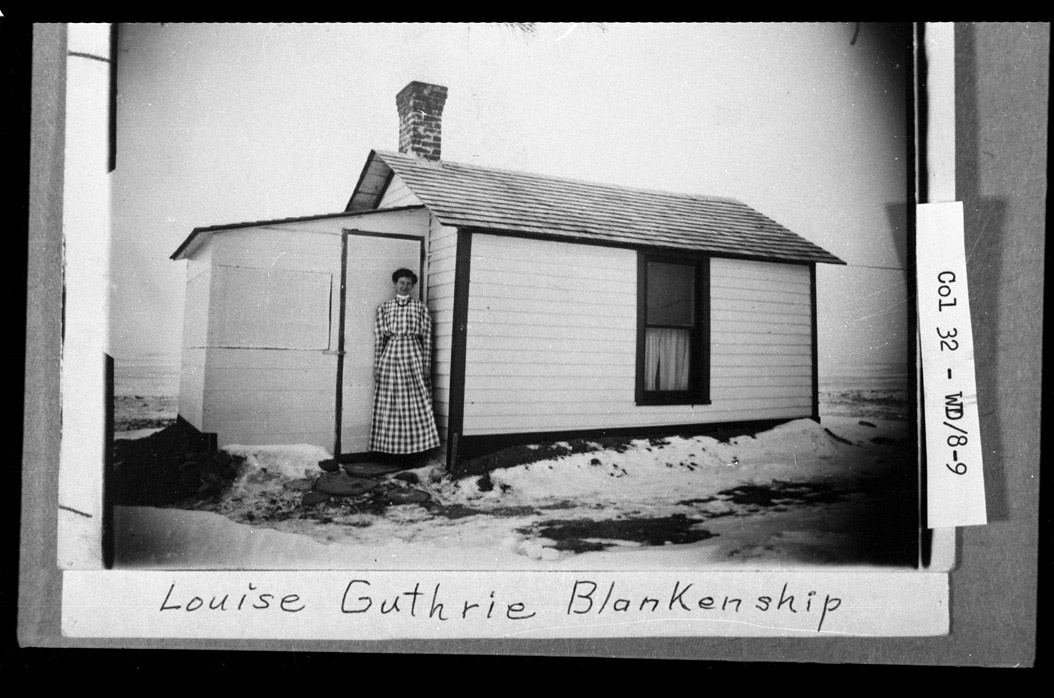
Homestead claims were filed by 118,472 people in North Dakota (See Image 3).

Thirty-nine percent (39%) of North Dakota’s land was claimed by homesteaders. This is the second highest percentage of the 30 states where the Homestead Act was valid.
The federal government transferred 17,417,466 acres from the public domain in North Dakota to private landowners through the Homestead Act (See Document 3).
Each township is 36 square miles. Each township has a number. Each section has a number. One section, usually section 16, was (and still is) set aside for the support of a school. No one could claim that section. Each section is one mile square, or 640 acres. Each quarter-section is ½ mile square or 160 acres (See Image 4).

Each section line is a road. Sometimes the roads were not built, but no homesteader could put a building or a fence on the portion of her or his land that was part of the section line road.
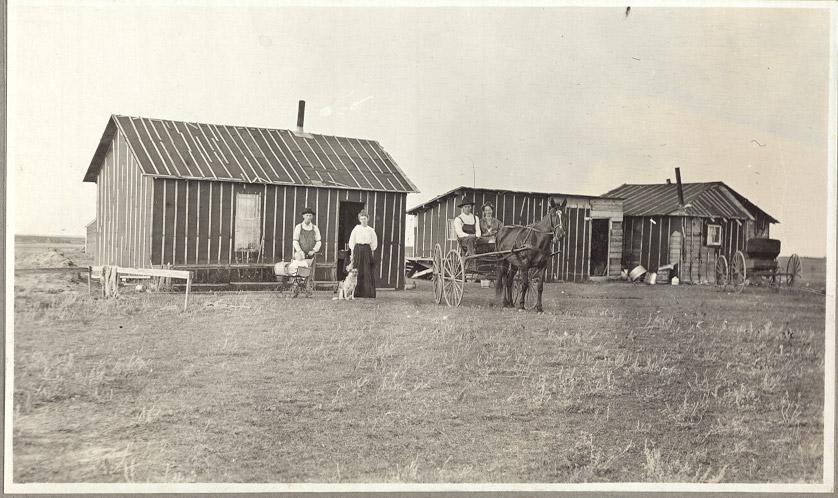
Claimants usually took the northeast, northwest, southeast, or southwest quarter as shown in section 1 (See Homestead Plat). But sometimes, the homesteader could claim half of one quarter and half of another as Nelson E. Nelson did in Section 8.
Townships did not necessarily have towns. Sometimes a person used their homestead claim to start a town, but most North Dakota towns started on railroad land (See Image 5). If the township was near a land-grant railroad, approximately half of the sections would belong to the railroad, not the federal government (See Image 6).
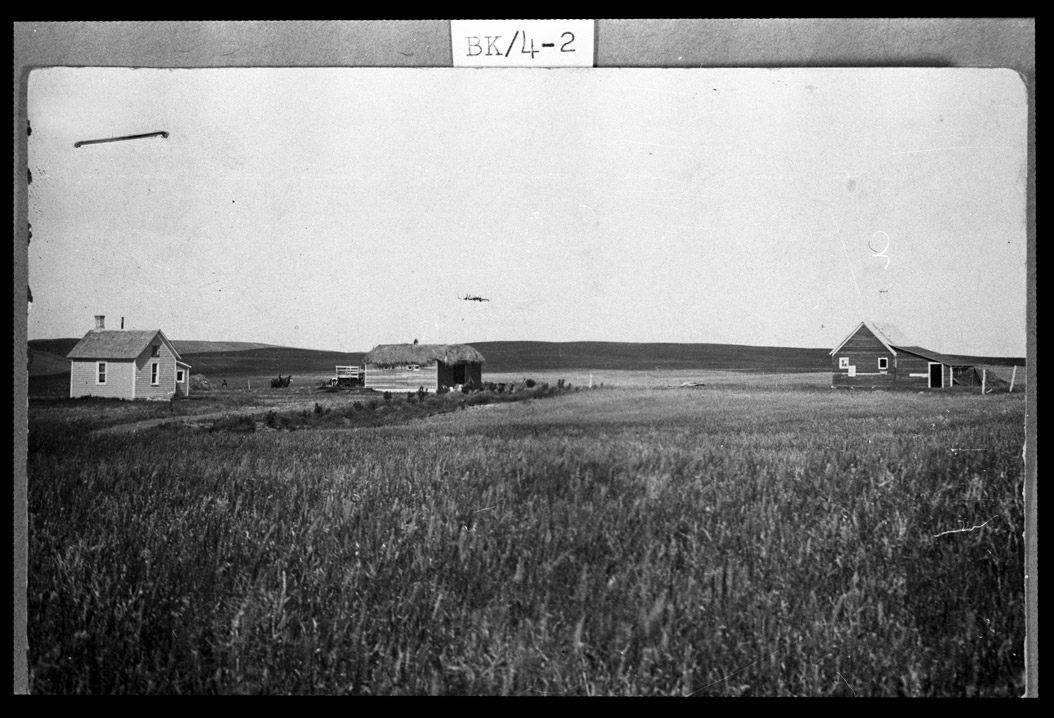
Each township became (and still is) a unit of government. Once the county was organized by the territory or the state legislature, townships could elect officers to attend to township business such as the condition of roads and choosing the name of the township. In North Dakota, some townships today remain unorganized (have no government) and the county takes care of township business.
Today in the United States, approximately 93,000,000 people are descendants of homesteaders.
Homestead Plat: a typical township

Cost of Homesteading
The “free” land everyone was talking about in the 1860s was not truly free. There was a filing fee of $10 in the original law. That fee changed from time to time, rising to $14 for a while, then $18. Still, that was not very much in exchange for 160 acres of land valued at $1.25 per acre.
What else did the law require? A claimant, or homesteader, had to have a house. The legal requirement for the size of the house varied, but usually it was supposed to be 10 feet by 12 feet, or 12 feet by 14 feet. Some people committed fraud by building a house that was 12 by 14 INCHES!


But the law clearly expected that the house would be a home, or a domicil as it was called in the Homestead Act. Building a house cost money. Even if the house was built of sod or logs acquired on the property, it still needed a door, a window, and some sort of furnishings. If the house was built of lumber purchased in town, it would cost a great deal more than the common sod house or tarpaper shack.
The law also required that the land be “improved” by agriculture. Some pioneers brought plows, horses, and harness with them. Those who came from Europe usually did not have large equipment so they bought, borrowed, or traded for what they needed. For instance, one woman and her children picked a neighbor’s potatoes while the neighbor plowed their field. If they had purchased a plow, it would have cost between $25 and $50. A horse might cost from $50 to $75 (See Image 8).



A family that arrived in April with a horse and a plow and a few boards with which to build a house, could set to work to build a house and plant a crop right away (See Image 9). However, they might get only five acres plowed the first year. If the five acres produced 15 bushels of wheat per acre (a good crop in those days) and the price was 50 cents a bushel, the total income for that year would be $37.50 ($836.40 today.) That amount might buy a cow with a calf or a plow. The family would also need some money to buy lamp oil, shoes for the children’s growing feet, and sugar, coffee and other foods they could not produce on the farm (See Image 10).
If a horse died or grasshoppers ate the wheat crop, the homesteading family might find themselves very short of cash. A farmer could not borrow money from a bank or a mortgage agent (there were traveling mortgage agentsA mortgage is a type of loan made by a bank or another financial agency. A mortgage agent or a bank gave a farmer some cash. The farmer had to sign a mortgage paper promising to pay back the amount of the mortgage with interest. Interest was a percentage of the amount borrowed. So if a farmer borrowed $100 at 10 per cent interest, the farmer had to pay the mortgage agent $110 to pay off the mortgage. If the farmer could not pay quickly, and the mortgage continued for several years, the interest increased. The borrower secured the loan with the land. That meant that if he or she could not re-pay the loan, the mortgage agent would get title to the land. Homestead claims could not be used to secure a loan until the farmer had “proved up” and received title to the land. in those days) before the homesteader had finalized ownership of the farm. For that reason, many farmers found work on another farm, in the Minnesota forests, or in a nearby town. Sometimes their teenaged children worked on a nearby farm. The boys worked in the fields, and the girls did housework.
Historian Gilbert Fite has estimated the cost of homesteading to be around $1,000. Others have said it could cost as much as $2,500. One thousand dollars was a lot of money in those days and many people did not have much money. The poorest people could not afford to leave a home in the east and move west to claim land. However, those with a little money could apply hard work and imagination to make up the difference between proving up or losing the claim (See Image 11).
Why is this important? The Homestead Law appealed to many people. It gave them a chance to own land which they could live on, mortgage, or sell. Land ownership usually meant the owner had a chance to improve his or her financial situation. The Homestead Law brought people to North Dakota far more quickly than they would have come without the offer of land.
Many people really did consider the land “free,” though they had to have $14 to pay for the filing papers. That is about $289 today. They also had to be strong enough to build a house, or have the money to hire someone to build a house. There were many things to consider before making a homestead claim, including how the family would find enough to eat before the farm was producing crops.
Although a homestead claim was expensive, people believed that the farm would produce and they would have a good living on the farm. With people settling on the land, towns got a start, too. Bankers, storekeepers, doctors, and teachers could make a living because homesteaders brought their business to a nearby town.



